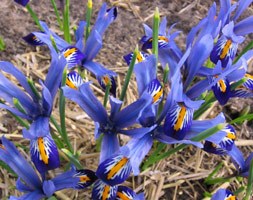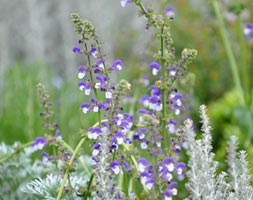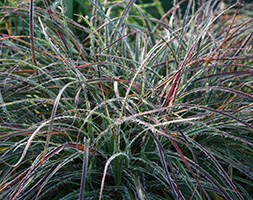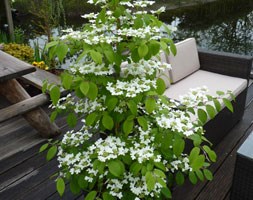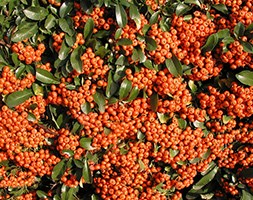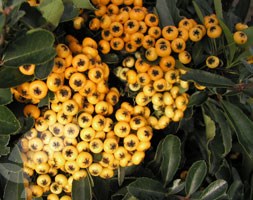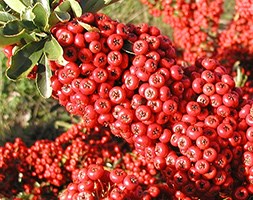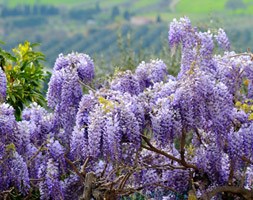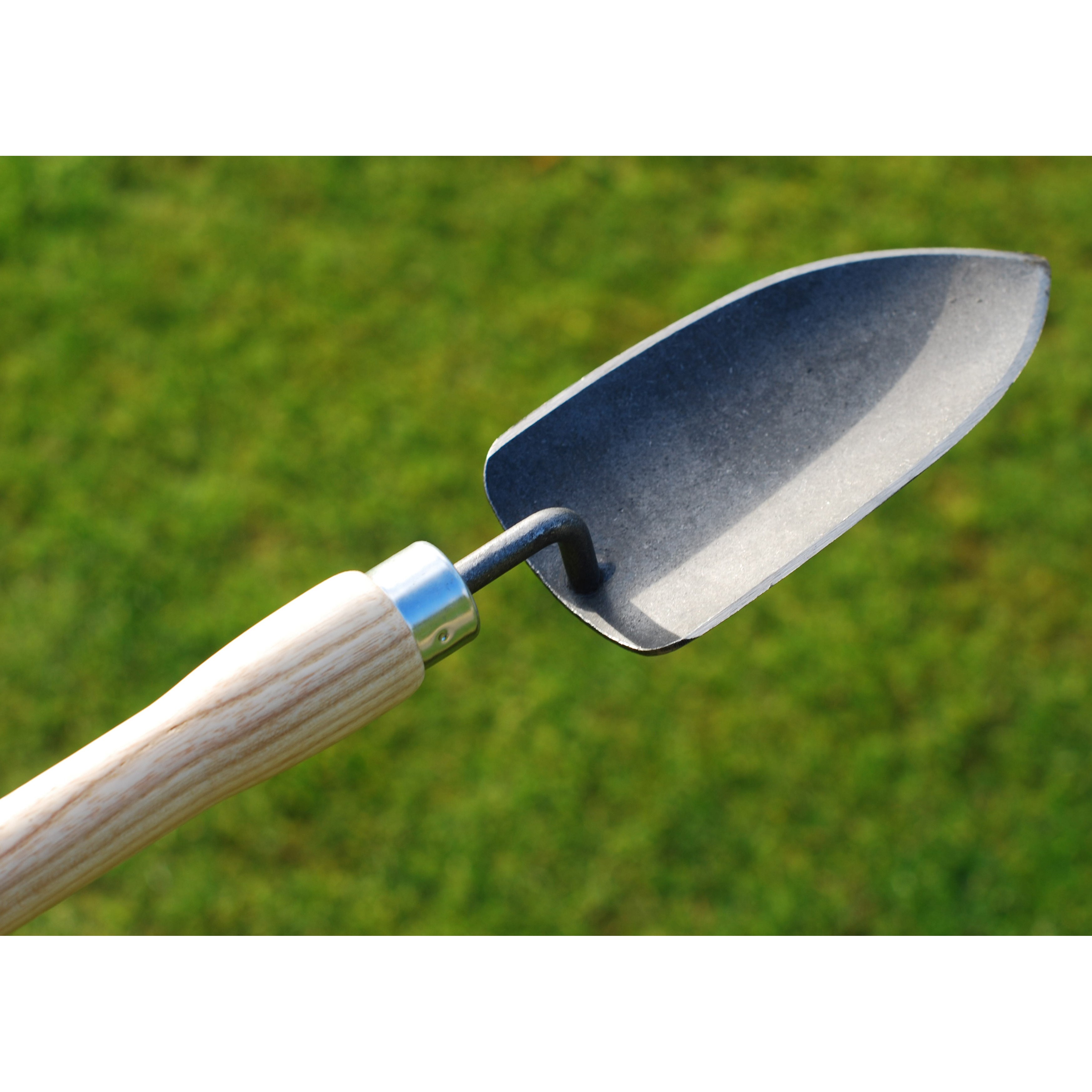Price reductions at Crocus
by Sarah - December 5th, 2013.Filed under: Crocus, Price Reductions.
Reduced price on items today at Crocus
Iris ‘Gordon’ (Reticulata) (iris bulbs) was £1.79 now £0.99
Position: full sun Soil: well-drained, moderately fertile, neutral to slightly alkaline soil Rate of growth: average Flowering period: February to March Flower colour: purple-blue, yellow and white Hardiness: fully hardy Bulb size: 5/- Slender, sky-blue standards, which have a darker blue flush, are held above the generously patterned, purple-blue, white and orange falls. A tough and reliable cultivar that mixes easily with crocus and primroses. Garden care: Plant bulbs 5cm deep and 5 – 10cm apart in the autumn, in a sunny spot with well-drained soil. Water moderately while they are actively growing and keep reasonably dry during their dormant period.
Salvia ‘Madeline’ (PBR) (sage) was £7.99 now £6.99
Position: full sun Soil: light, moderately fertile, humus-rich, moist but well- drained soil Rate of growth: average Flowering period: June to August Other features: attractive to butterflies and bees Hardiness: fully hardy Each flower is made up of two colours, as the upper lip is a rich purple blue, while the lower one is near-white. They are borne on upright stems from early summer, often producing a second flush is dead-headed promptly. Garden care: To prolong flowering remove the flower spikes as soon they start to fade. Apply a generous 5-7cm (2-3in) mulch of well-rotted garden compost or manure around the base of the plant in spring.
Luzula nivea (snowy woodrush) was £9.99 now £8.99
Position: partial to full shade Soil: poor to moderately-fertile, humus-rich, moist but well-drained soil Rate of growth: slow-growing Flowering period: June to July Hardiness: fully hardy A slow-spreading, evergreen perennial that forms loose clumps of rough, deep green leaves. In early and midsummer sprays of pure white, tuft-like flowers appear that last for several weeks and these can be dried for flower arrangements. This is a pretty and useful ornamental grass that eventually makes a good groundcover in shadier areas of the garden. It will also thrive in a sunny spot if the soil is reliably moist. Garden care: Lift and divide congested colonies between April and June. Remove tatty foliage in autumn.
Viburnum plicatum f. tomentosum Kilimanjaro (‘Jww1’) (viburnum) was £9.99 now £8.99
Position: full sun or partial shade Soil: moderately fertile, moist, well-drained soil Rate of growth: average Flowering period: May to June Hardiness: fully hardy Very pretty, lacecap-like flowers appear on the tiered branches of this conical, deciduous shrub in early summer. More upright in habit than the species, it is perfect for the shrub border where space is at a premium. In autumn the leaves will take on good fiery colours before they fall providing another season of interest. Garden care: Keep the pruning of young plants to a minimum. Any vertical shoots that threaten to spoil the distinctive tiered shape of established plants should be cut back to their point of origin in summer after flowering.
Pyracantha Saphyr Orange (‘Cadange’) (PBR) (firethorn) was £12.99 now £9.99
Position: full sun or partial shade Soil: any fertile, well-drained soil Rate of growth: average Flowering period: May Flower colour: pure white Other features: bright orange-red berries Hardiness: fully hardy To find out more about how to plant a hedge, click here Upright, later spreading, evergreen shrub with dark green leaves, spiny branches and bunches of small white flowers in late spring. These are followed by a profusion of bright orange-red berries in autumn. It is for these showy berries that it is grown, providing colour in the garden when there is little else. It can be grown as a free-standing shrub, against a wall or as a hedge. Garden care: When planting incorporate plenty of well- rotted organic matter in to the planting hole. Prune hedges in early to mid-summer. In early spring, trim out misplaced or crossing branches on free-standing shrubs. Tie in any shoots to extend the framework of wall shrubs, and shorten branches to about 2 or 3 leaves from the base after flowering to expose the berries.
Pyracantha Saphyr Jaune (‘Cadaune’) (PBR) (firethorn (syn. Saphyr Yellow)) was £12.99 now £9.99
Position: full sun or partial shade Soil: any fertile, well-drained soil Rate of growth: average Flowering period: May Flower colour: pure white Other features: bright yellow berries Hardiness: fully hardy To find out more about how to plant a hedge, click here Upright, later spreading, evergreen shrub with dark green leaves, spiny branches and bunches of small white flowers in late spring. These are followed by a profusion of bright yellow berries in autumn. It is for these showy berries that it is grown, providing colour in the garden when there is little else. It can be grown as a free-standing shrub, against a wall or as a hedge. Garden care: When planting incorporate plenty of well- rotted organic matter in to the planting hole. Prune hedges in early to mid-summer. In early spring, trim out misplaced or crossing branches on free-standing shrubs. Tie in any shoots to extend the framework of wall shrubs, and shorten branches to about 2 or 3 leaves from the base after flowering to expose the berries.
Pyracantha Saphyr Rouge (‘Cadrou’) (PBR) (firethorn (syn. Saphyr Red)) was £12.99 now £9.99
Position: full sun or partial shade Soil: any fertile, well-drained soil Rate of growth: average Flowering period: May Flower colour: pure white Other features: orange-red berries Hardiness: fully hardy To find out more about how to plant a hedge, click here Upright, later spreading, evergreen shrub with dark green leaves, spiny branches and bunches of small white flowers in late spring. These are followed by a profusion of bright orange-red berries in autumn. It is for these showy berries that it is grown, providing colour in the garden when there is little else. It can be grown as a free-standing shrub, against a wall or as a hedge. Garden care: When planting incorporate plenty of well- rotted organic matter in to the planting hole. Prune hedges in early to mid-summer. In early spring, trim out misplaced or crossing branches on free-standing shrubs. Tie in any shoots to extend the framework of wall shrubs, and shorten branches to about 2 or 3 leaves from the base after flowering to expose the berries.
Wisteria sinensis (Chinese wisteria) was £24.99 now £12.49
Position: full sun or light, dappled shade Soil: fertile, moist, well-drained soil Rate of growth: fast-growing Flowering period: May to June Flower colour: bluish-lilac Other features: velvety, green seed-pods in hot summers; all parts of the plant are harmful if ingested Hardiness: fully hardy Pendant clusters of fragrant, pea-like, bluish-lilac flowers in May and June, often followed by velvety-green seed-pods. This vigorous Chinese wisteria looks fabulous trained over a sunny wall or strong pergola. Renowned for its superior fragrance and flower-colour, the twining stems need careful pruning. All the Wisterias we sell are grafted, so will start to flower at a younger age than those grown from cuttings. Garden care: To get lots of flowers, the twining stems need pruning twice a year – once in summer (about two months after the flowering has finished) and again in mid-winter. To train your Wisteria against a wall, the wall will first need a network of stout horizontal wires, attached at approximately 30cm intervals. After planting, prune the leading shoot of your Wisteria back to approximately 90cm above ground level and remove any side branches as this will encourage a strong new leader to form. In the summer of the first growing season, tie the leader in vertically and choose two new lateral shoots on either side of the leader. Tie these onto the wires at a 45 degree angle. Any smaller shoots coming from these lateral branches should be cut back to two or three buds. In the first winter, cut back the leader to a bud approximately 75cm above the highest lateral branch. Gently untie the lateral branches and prune them back by about a third, then re-tie them onto a wire so they are nearly horizontal. In subsequent summers (and until the plant has filled the allotted space), tie in the leader as it grows and choose two strong laterals to form the next tier. These should then be tied in at a 45 degree angle and as in the previous year, any smaller shoots coming from these should be cut back to two or three buds. In subsequent winters cut back the leading shoot as before and cut back and re-tie the new laterals to a near-horizontal position. The older laterals can be cut back by about a third of their total length. Once the plant has become established and reached the desired height, keep tying in the lateral stems as they spread out. In summer, cut back the wispy stems on both the laterals and sub-laterals (the
De Wit long handled planting trowel was £14.99 now £12.99
Handy for reaching into those hard to reach spots towards the back of the border or raised bed, these hand tools have a longer, shock-resistant, ash handle that features a unique ‘bulb’ design at each end, which will help keep your hands from slipping. The Dutch are rightly regarded as makers of the finest gardening tools. De Wit have been around longer than anyone. They started in 1898 and the 4th generation of De Wits are now in charge of the business; one is a trained wood turner, the other trained as a blacksmith. De Wit forge their tools from carbon steel in the traditional way. Carbon Steel is naturally tougher than stainless steel and is not prone to metal fatigue. De Wit also burnish their steel. This not only helps to protect it for longer but gives it a patina that blackens it – just like traditional English tools from the Edwardian era. All De Wit tools have turned hardwood handles of oiled Ash. Ash is not only very strong but resists shock better than woods like oak or beech, which is why it was traditionally used for Axe handles. The result is a beautiful tool to hold in the hand but rugged and durable. They feel so natural to use that they are like an extension of the person that uses them. These tools will give you a lifetime of use, until you hand them on. Measurements: Length 67cm x width 8cm x height 5cm







